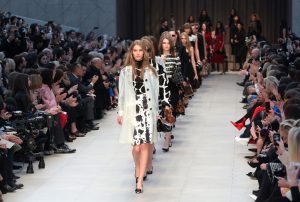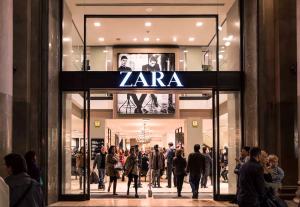New York Fashion Week has influenced the fashion industry and consumer tastes since 1943. It occurs twice a year in February and September, and it traditionally features styles that will be released in the following season. This has given designers and editors time to publish glossy photos and build hype for what was to come; however, as the most recent round of catwalks and glamour has come to a close, a new trend is emerging, and it is not even related to the style of the clothes themselves. What is changing the fashion industry is the idea of “see now, buy now.”
Burberry rattled the industry when it was the first to make this dramatic decision in February 2016. With the idea of “runway to retail” in mind, the products shown on the catwalk were available for purchase promptly after the show. The styles were labeled “immediate and season-less,” and the motivation for this decision was clear.
Fast fashion brands such as Zara and Forever 21 can whip out new styles from sketches to the shelves within a few weeks. With the help of the Internet, this means that the items can also quickly go out of fashion because of overexposure and instant popularity, especially if online influencers feature photos of themselves wearing similar items. The brands are notorious for mimicking the styles of high-end designers, so this means that by the time Vera Wang, Marchesa, and the like release their products months after their initial catwalks, they risk their styles looking dated and having less demand than they would have six months prior.
This comes at a time when people are constantly looking for immediate gratification, so it makes complete sense that designers are having to change their business models to fit what consumers want. Since February, several brands such as Tom Ford, Michael Kors, and Proenza Schouler have adapted in order to keep up with this changing industry. This requires the brands to adjust their production and supply chain, which is difficult for companies that have been running the same timeline for decades. High fashion used to be about scarcity and standing out, but nowadays, people are able to get their hands on just about any style they so desire.
In the modern era, shopping has become an addictive pastime, and according to NYU marketing professor Tom Meyvis, it elicits the most joy when consumers are able to browse, see something they want, and have it immediately. Just look at the increasingly rapid delivery times of online retailers. Fast fashion has perfectly filled this gap by shortening the delivery time, and if high-end brands want to keep up, they have no choice but to change. This cat-and-mouse cycle might actually be benefitting consumers in the end because data from the U.S. Bureau of Labor Statistics shows that even though there has been an overall increase in the price of retail goods, there has been a decrease in the price of clothing. Increased competition usually benefits the consumer, and the vast power of media and the Internet only adds ammunition.



Leave a Reply
You must be logged in to post a comment.